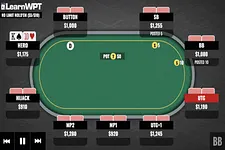On Failing to Protect Your Equity in the Pot

Sometimes no-limit hold'em players describe themselves making a postflop bet in order to "protect" their hand. But what is meant by that justfication? Do they want their opponents to call? To fold?
Peter "Carroters" Clarke of PokerStars School has been continuing his series of short videos focusing on common "Poker Pitfalls," with the latest episode addressing this very topic of betting to "protect" one's hand — and the common mistake of failing to do so when it is warranted.
In "Poker Pitfalls - Episode 6, Failing to Protect," Clarke starts out by addressing that idea of betting to "protect" your hand, noting how what is being protected is the bettor's equity in the pot (or not protected, if the bet to protect isn't being made as it should).
From there Clarke explains situations when such a bet to protect is recommended, such as when a player has a vulnerable hand that nonetheless stands to be ahead of an opponent's range. Indeed, it's important to keep in mind that the bet to protect is most often made by a player currently ahead in the hand. Thus while eliciting a fold in response isn't a bad thing, it isn't necessarily the primary purpose of the bet.
Watch and listen to Clarke's explanation of when and why players should bet to protect their equity, including his sample hand further illustrating the idea:
The Stars Group owns a majority shareholding in iBus Media.










